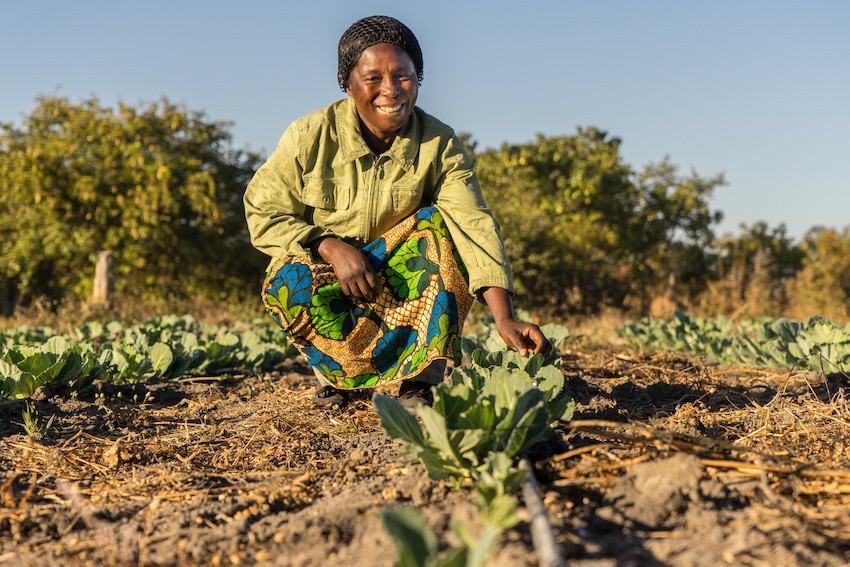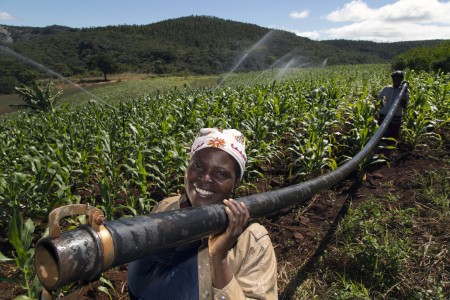This piece was also published on Zilient.
Just 18 months after an El Niño weather event severely undermined food availability in parts of the developing world, a new humanitarian crisis is unfolding in the Horn of Africa. During 2015-2016, variable weather – first drought and then floods – has caused widespread damage to harvests and livelihoods in the region, requiring food assistance for more than ten million people in Ethiopia alone.

Climate change prompts quests for greater resilience
As relief agencies urgently respond with food and cash, the development community has embarked on renewed medium- to long-term efforts to make local livelihoods more resilient. Most of the people in the region depend on smallholder farming and pastoralism, and their well-being and livelihoods are highly vulnerable to the negative impacts that increasingly variable weather has on closely intertwined water and land resources. Climate change complicates this situation by steadily increasing the variability of rainfall and temperature.
Enhancing the resilience of smallholder livelihoods in sub-Saharan Africa will take a significant investment in agricultural development. The European Union, for example, announced its intention to invest 1.5 billion Euros in resilience programs for the Sahel by 2020. Similarly, the US Agency for International Development (USAID), Rockefeller Foundation and Swedish International Development cooperation (SIDA) have jointly committed US$100 million through the Global Resilience Fund.
But how can these and other investors know whether their support is having the intended effect? In an attempt to provide answers, I and colleagues at the CGIAR Program on Water, Land and Ecosystems (WLE), led by the International Water Management Institute (IWMI), recently carried out a USAID-supported review of tools designed to assess livelihood resilience in the face of climate change.
Inadequate tools make for opaque paths toward outcomes
The development of such tools is still in its infancy. Most were devised after the Copenhagen Climate Change Conference in 2009. Of the more than 50 potentially useful tools covered by the review initially, we found that only 15 adequately address livelihoods, well-being and climate change in agricultural landscapes. And even some of these are not well grounded in the prevailing resilience theories, focusing too much on livelihood assets, such as access to labor, material goods or financial resources.
The tools vary widely in terms of their complexity and approach. Most had surprisingly weak sets of indicators for assessing the different aspects of change and shocks that provide metrics to help assess whether livelihoods are moving in the desired direction. We found that only two tools capture interactions between livelihoods and landscapes, and assess local capacity to build resilience, by devising strategies to cope with climate or other shocks that undermine development.
One especially noteworthy finding in the review is the weak link between the various tools and development outcomes. According to our review, the tools available are not particularly effective at helping users achieve their development objectives, as they strive to build resilience.
First steps toward measuring resilience
Despite most existing climate resilience measurement tools still being in their infancy, investors and others in the development community can start to develop insights into whether progress toward resilience is being made.
For example, we recommend using a combination of the existing tools when evaluating resilience. Not depending on a single tool, and instead using tools specific to different steps of project implementation, such as using one tool for base line assessment followed by others for specific scale or system dimensions, can lead to more accurate measurements. Similarly, including both quantitative and qualitative data in an assessment can help increase certainty.
It is also critical to define a clear pathway of how increases in resilience will contribute to greater well-being, prosperity or other development outcome. This can help prevent a situation in which tools might guide implementers toward undesirable but resilient states, such as back into poverty traps, which, while being highly resilient, are entirely unwanted.
Therefore, while development experts need to refine existing and develop new tools, as well as evaluate and share their impacts, people in the Horn of Africa cannot wait. As relief efforts go forward, investors and other implementers must take precautions, such as those listed above, to ensure that their efforts to build resilience stay on track.


















Comments
Résilience is à very broad concept and thé word Can bé considéréd as generic , meaning différent things. It is therefore difficult for any one took or one set of indicators to bé able to capture All thé éléments or factors that Can bé considéréd as building Résilience. Such measurement certainly needs multiple tools.